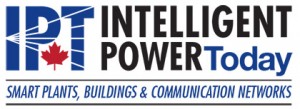Adapting Switchgear for Grid Integration of Intermittent Power Sources
The increasing integration of renewable energy sources like wind and solar power into the power grid presents unique challenges. Unlike traditional fossil fuel-based generation, these renewable sources are inherently intermittent, meaning their power output fluctuates depending on weather conditions. This variability necessitates adapting existing switchgear technologies to handle the dynamic nature of renewable energy generation and the potential for rapid changes in power flow within the grid. This article explores the challenges and considerations for switchgear as the grid integrates more intermittent power sources.
Challenges of Renewable Energy Integration
Renewable energy sources like wind and solar are inherently intermittent, leading to fluctuations in power generation that can impact grid stability and reliability.
Variability in Power Generation
The power output from renewable sources can vary significantly due to environmental conditions, creating challenges in balancing supply and demand on the grid.
Rapid Changes in Power Flow
Renewable energy can cause rapid changes in power flow, requiring switchgear that can quickly respond to prevent grid instability or outages.
Adapting Traditional Switchgear
To accommodate the integration of renewable energy, traditional switchgear must be adapted or redesigned to handle the increased variability and dynamic nature of the power flow.
Enhanced Switching Capabilities
Modern switchgear needs enhanced switching capabilities to manage the rapid changes in electrical load and generation levels, ensuring reliable and continuous power supply.
Advanced Protection Systems
Incorporating advanced protection systems into switchgear can help to detect and mitigate issues more quickly, reducing the risk of damage to the grid infrastructure and ensuring safety.
Innovations in Switchgear for Renewable Integration
Several innovations in switchgear technology are facilitating the integration of intermittent renewable energy sources into the grid.
Intelligent Control Systems
Smart switchgear, equipped with intelligent control systems, can automatically adjust to changing power flows, optimizing grid performance and increasing the efficiency of renewable energy integration.
Energy Storage Integration
Integrating energy storage solutions with switchgear can provide a buffer for intermittent power generation, smoothing out variability and enhancing grid stability.
Benefits and Considerations
While adapting switchgear for renewable integration offers many benefits, including improved grid stability and increased renewable capacity, it also presents several considerations.
Investment and Cost
Upgrading or replacing switchgear to handle renewable integration requires significant investment. A thorough cost-benefit analysis is essential to justify these expenditures and ensure long-term value.
Regulatory and Compliance Issues
Adapting switchgear for renewable integration must comply with evolving regulatory standards and grid compliance requirements, necessitating ongoing monitoring and adjustments.
Technical Training and Support
As switchgear becomes more advanced to accommodate renewable integration, additional technical training and support are necessary for grid operators and maintenance personnel to manage these systems effectively.
Adapting switchgear for a grid with a higher proportion of intermittent renewable energy sources is crucial for ensuring a stable and reliable power supply. By adopting advanced circuit breakers, integrating energy storage, and leveraging smart grid technologies, switchgear can be adapted to handle the dynamic nature of renewable energy generation. Emerging technologies like solid-state circuit breakers and hybrid designs hold promise for further enhancing the ability of switchgear to manage the complexities of a grid with a significant renewable energy component. As the transition towards renewable energy sources continues, continuous innovation in switchgear design will be essential for creating a more robust and sustainable power grid for the future.
